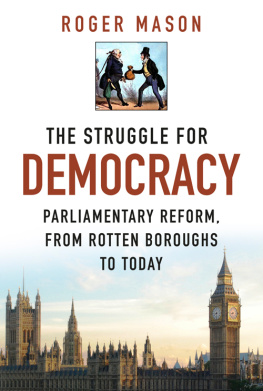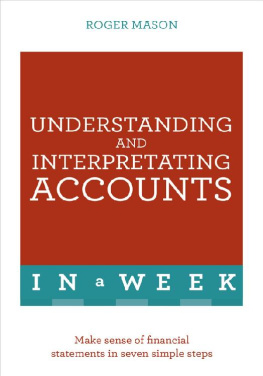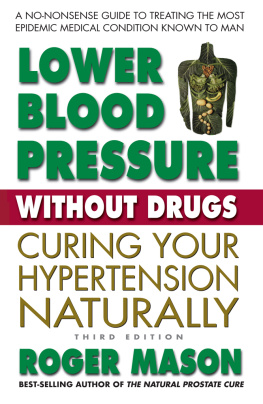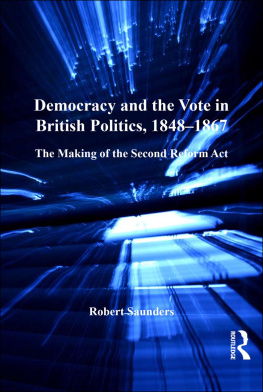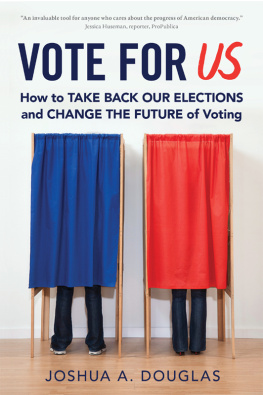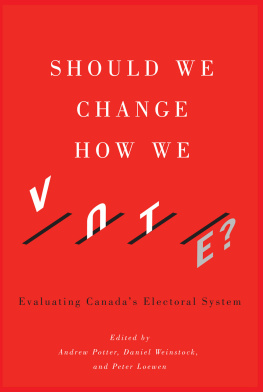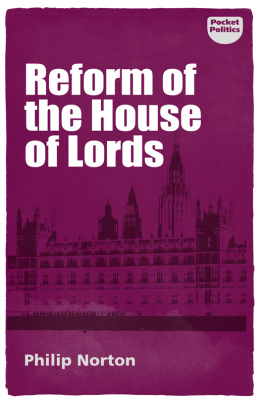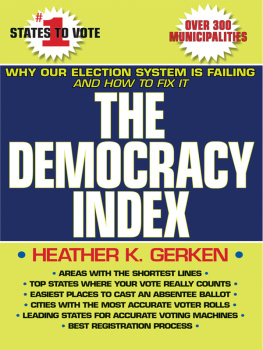
Contents
Appendix A |
Appendix B |
Appendix C |
Appendix D |
Appendix E |
This is my nineteenth book. Most of the others have been on the subjects of finance and company law, and I have enjoyed writing them all, but this one is special. It has been a new challenge and writing it has given me the most pleasure. I hope that you enjoy reading it.
Many years ago I acquired a love of history whilst a pupil at Aylesbury Grammar School, and it has remained with me. My two history teachers were Mr Byford and Mr Dalby Ball, and I have much to thank them for. I recall Mr Byford teaching us about Parliamentary Reform, and in particular an inspired lesson on the 1867 Reform Act, which is covered in Chapter 10. It has remained in my mind and it is perhaps not fanciful to think that it provided the germ of the idea for this book.
I have attempted to tell the story faithfully, but at the same time to make the book interesting and enjoyable. It is something that Roy Jenkins and Antonia Fraser have managed so well, and I have tried to do the same. I hope that you will think that I have succeeded.
Finally I would like to express my thanks to Geoff Wright, my wifes cousin. He read through the manuscript and made a number of very helpful suggestions. He has a special insight because he is a former publisher, and twice stood as a candidate for Parliament.
Roger Mason
1
In The Sound of Music Julie Andrews memorably sang, Lets start at the very beginning, a very good place to start. It is sound advice for this book. The first two landmarks in the story of Parliamentary Reform are Catholic Emancipation, which was achieved in 1829 and is the subject of Chapter 2, and the Great Reform Act of 1832. This first chapter briefly describes the development of Parliament from the very beginning, and then moves on to the state of the unreformed Parliament prior to 1832.
The English Parliament is often, and with some justification, said to be the mother of parliaments, and it is certainly one of the oldest. It was not invented and did not have a clearly defined starting date, or even an unclearly defined starting date. It evolved, and of course continues to do so. At times the evolution was rapid, but for long periods there were very few changes.
The different parts of England and later England itself were originally governed by absolute rulers, the chief or monarch. He (with due respect to Boudica the personal pronoun is carefully chosen) was a virtual dictator, and if necessary got his way by the exercise of force. He could only be thwarted by greater force or by assassination.
The earliest assembly worth mentioning is the Saxon Witan, which was summoned at the discretion of the king. He called whom he liked and he did so when he liked. The Witan could inform the king and perhaps influence the king, but it could not overrule the king. After the Norman Conquest there was a small but permanent inner council of advisers and from time to time the king would also call additional earls, barons and churchmen. This council formed the basis of what in time would become the House of Lords. For many years county moots had included a representative element. After the Conquest these became known as county courts and incorporated the tentative concept of representative local government. Representatives of the county courts formed the early basis of what in time would become the House of Commons.
Of course, as all schoolchildren should know but perhaps dont, in 1215 King John sealed Magna Carta, which required him to listen to the barons and at least up to a point accept their advice. The use of the word parliament commenced in England in 1236. It is significant that the word is derived from the French word parler, which means to talk or discuss. It is not derived from a word meaning to legislate or decide.
The forerunner of the modern Parliament was set up in 1265 by Simon de Montfort, the nobleman who was leading a rebellion against Henry III. As well as the barons this included representatives from each county, and also from the cities and towns. De Montfort was killed in battle soon afterwards, but Henrys son Edward I developed the institution when he became king in 1272. Edward summoned Parliament forty-six times during his thirty-five-year reign. As well as nobles and churchmen there were elections for two representatives from each county (the knights of the shires) and for two representatives from selected cities and towns (the burgesses).
An essential part of the Parliaments work was to agree taxes. After this had been accomplished the work of the knights of the shires, the burgesses and the clergy was usually done. The king would then discuss laws and other matters with the earls, barons, bishops and abbots.
The representatives of the counties were publicly elected at county court meetings. The process for electing burgesses, who represented the boroughs, varied from town to town. These arrangements did not substantially alter until the 1832 Reform Act. After the early seventeenth century there were very few changes in which cities and towns sent representatives to Parliament, and after the fifteenth century there were not many changes concerning who was allowed to vote.
The power of Parliament relative to that of the monarch progressively increased after the death of Edward I in 1307. Apart from anything else a civil war was won by Parliament, and Charles I was executed. Furthermore, in 1688 Parliament removed James II and invited the Protestant couple William and Mary to be joint sovereigns. In the following year passage of the Bill of Rights was secured. This laid down the limits on the power of the Crown and the rights of Parliament. Subsequently the power of the monarch relative to Parliament waxed and waned. In 1780 a disgruntled House of Commons passed the motion that the power of the Crown has increased, is increasing, and ought to be diminished.
The English Parliament became the Parliament of Great Britain in 1707 upon the union of England and Wales with Scotland. This in turn became the Parliament of the United Kingdom upon the admission of Irish constituencies and members in 1801. Appendix A shows the full list of parliamentary constituencies at the time of the 1830 general election. The breakdown by type of seat and by country is as follows:
Borough | County | University | Total |
England | | | | |
Wales | | | | |
Scotland | | | | |
Ireland | | | | |
Total | | | | |
This does not mean that there were 379 MPs and it does not mean that the distribution between the four countries was in these proportions. The total number of MPs was 658, the main reason for the discrepancy being that most constituencies returned two members. The distribution of the MPs was as follows:
Borough | County | University | Total |
England | | | | |
Wales | | | | |
Scotland | | | | |
Ireland | | | | |
Total | |
Next page
